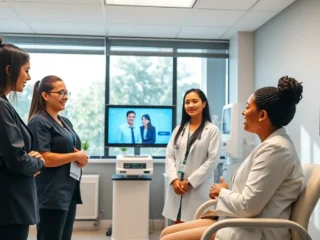
Mesothelioma is a cancer type that starts with abnormal cell growth in the mesothelium. This thin layer of tissue covers numerous internal organs, making mesothelioma an aggressive disease. Thankfully, it is relatively rare, with 3,000 cases being diagnosed in the US each year.
However, you must remember that there is a person, a family, and a community impacted behind every diagnosis. Understanding the medical and social dimensions of mesothelioma is the first step toward building a support system for those suffering from it. Continue reading to learn more about mesothelioma and how communities can rally to provide meaningful support.
Types, Causes, and Symptoms of Mesothelioma
Being informed is the first step toward helping. There are four types of mesothelioma:
- Pleural mesothelioma affects the lining around your lungs and chest walls. It is the most common type of mesothelioma.
- Peritoneal mesothelioma affects the abdominal lining and is the second most common type.
- Pericardial mesothelioma is exceptionally rare and affects the pericardium, the lining of your heart.
- Testicular mesothelioma is also extremely uncommon. This develops in the lining of the testes in males.
You may already know asbestos as the main cause of mesothelioma. Exposure to asbestos fibres causes inflammation and damage to your cells, leading to mesothelioma. The time frame between exposure and diagnosis can exceed 30 years.
A long latency period means people might be unaware of the risk until decades later. However, mesothelioma symptoms early can lead to quicker diagnosis and better outcomes. This is where community awareness becomes crucial. If you live in a place where the risk of asbestos exposure is high, you must watch out for the following symptoms among the residents:
- Shortness of breath
- Persistent cough
- Unexplained weightloss
- Abdominal pain or swelling
- Nausea and vomiting.
How to Help
Mesothelioma ripples through the family, workplace, neighborhood, and beyond. While the patient focuses on the overwhelming implications of treatment and therapy, the community must show collective support.
- Advocate for Safer Environments
One of the most impactful things you can do is advocate for removing asbestos from public and private spaces. While asbestos is banned in the US, many older buildings still contain these fibres. These reside in the insulation, floor tiles, and roofing materials in numerous schools, hospitals, and homes, increasing the risk of mesothelioma.

Supporting your community here entails raising awareness among the people, petitioning for updated laws, and funding for renovation projects. This can help push local governments to prioritize asbestos inspections and removal programs, keeping your community safe.
- Support Caregivers
Caregivers are the underrated heroes in the fight against mesothelioma. However, this role can be emotionally and financially demanding. As community members, you can ease their burden by offering practical help. You can, for instance, prepare meals, provide transportation, or babysit children. Sometimes, caregivers might just need a listening ear, and checking on them regularly can be more impactful than you realize.
- Educate At-Risk Populations
Certain groups, such as industrial workers and military veterans, face a higher risk of asbestos exposure. Educating them can promote earlier detection and prevention. You can offer free workshops, distribute information brochures, or partner with unions and local employers to provide health screening and educational sessions. This will help people understand the risk and warning signs of mesothelioma, also letting them know where to seek help.
Endnote
The impact of mesothelioma is profound and should not be underestimated. This burden should not solely fall on the patient; a community-centered approach is essential to protect them. Remember, your actions, voice, and awareness can significantly impact your community. Follow the tips above and be the reason a patient feels supported, seen, and loved.












